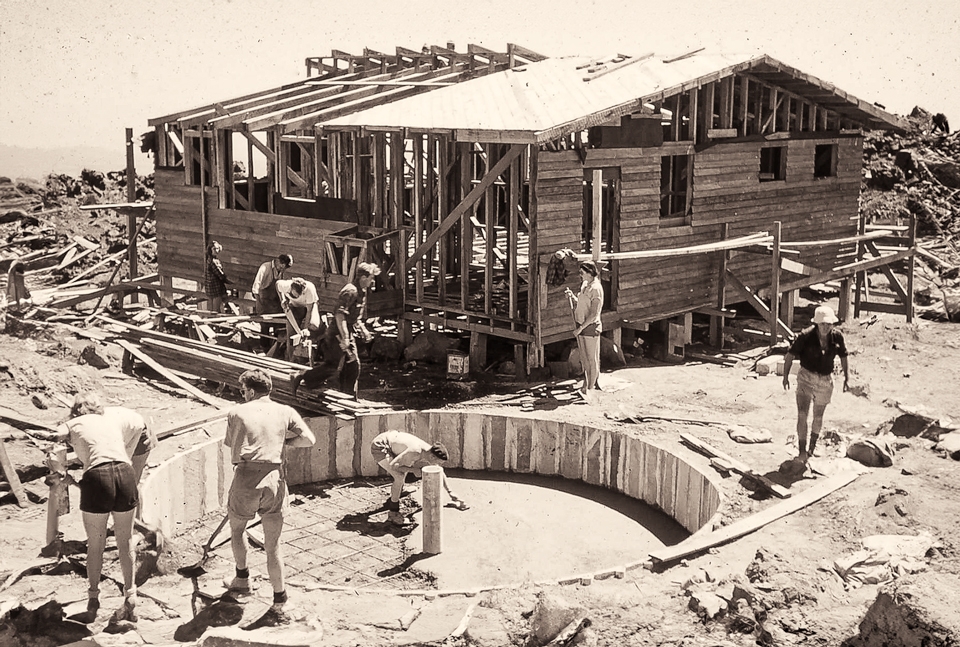WTMC – 75 years of the Wellington Tramping and Mountaineering Club
A brief history of the first 75 years of the Wellington Tramping and Mountaineering Club

A 3-minute history of the WTMC
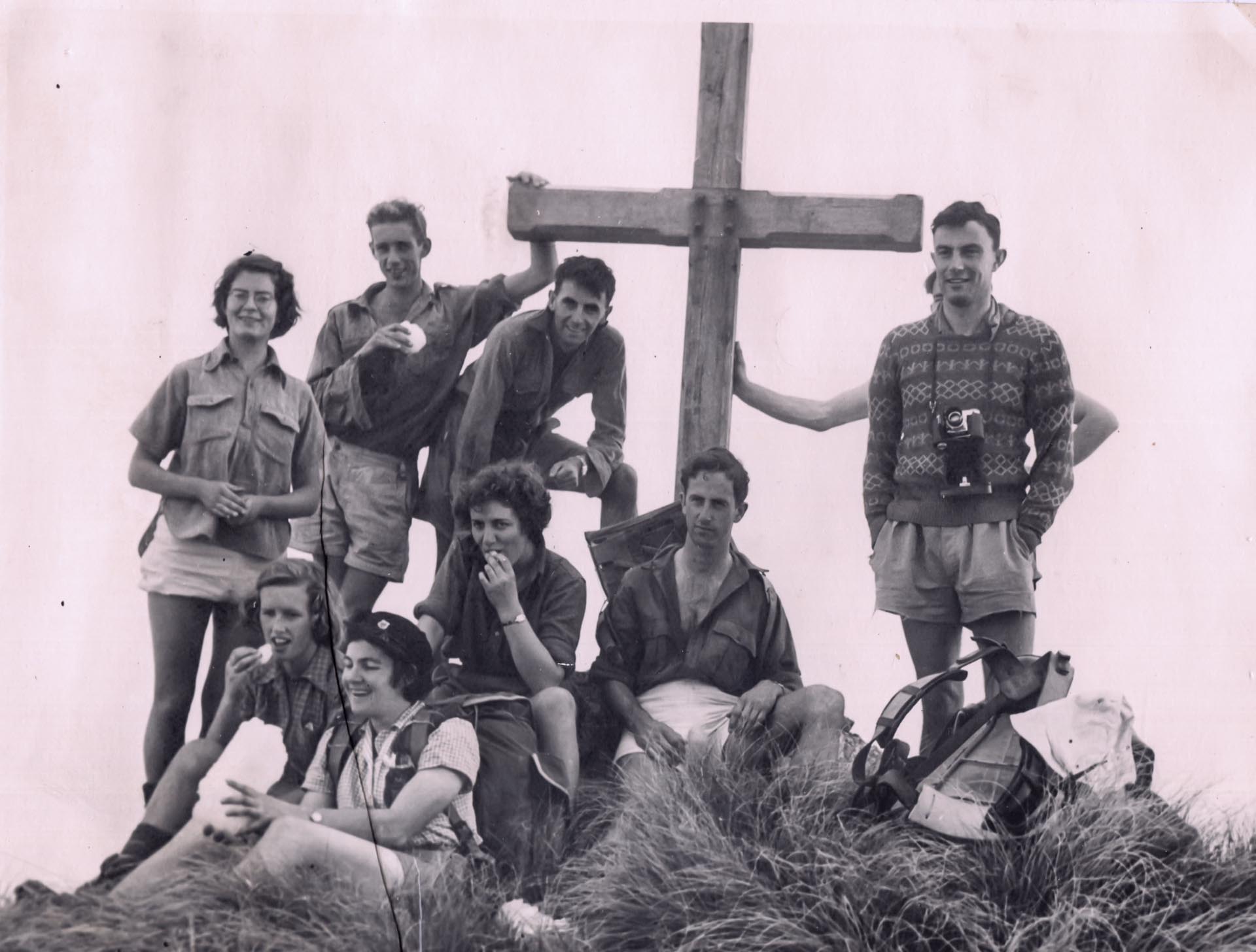
The WTMC is now a grown up 75 year old. Sir Ed would have asked if this is somehow more significant than 74 or 76 years and why should anyone care either way?
Maybe it really doesn’t matter much. Or, perhaps it’s just worthwhile taking a few minutes to wonder how those 75 years began, back in 1947 when the club would have been totally unrecognisable to most of today’s members.
Of course, there is nobody involved with the club now who was around in that long ago era to ask directly, but there are a few oldies who knew many of them (or knew about them) and that have a good idea of those early years. And simply reading the ‘Journal of the Wellington Tramping and Mountaineering Club, Vol. 1 No. 1’ gives a clear picture of a dynamic, enthusiastic, and hard-working group of tramping enthusiasts who started the WTMC on its 75-year journey to 2022.
In 1947 there were two small tramping clubs in Wellington that were formed in the 1930s, the Outdoor Club and the Ruc-Sac Club. During WWII the number of members in these clubs dropped dramatically, and subsequently it was agreed to combine the two to become the precursor of the WTMC, although it was initially named the United Tramping Club. A constitution for the club was ratified on December 11, 1947, and in 1948 the club changed its name to the Wellington Tramping and Mountaineering Club and became an Incorporated Society under the Act.
In 1962 the few remaining members of the Paua Tramping Club merged with the WTMC on the conditions that the WTMC maintained their Paua Hut and that the Paua club members retained access.
The club’s constitution was understandably biased towards the Tararua Range given that most of the tramping was in that area because the cost and difficulty of transport to further afield areas was mostly prohibitive. One clause was specifically concerned with, ‘the preservation of the Tararuas [sic] as a natural unspoiled reserve, and the opposing of further substantial development which appears to violate this object’.
It may be a surprise to us today to note that at that time there was considerable commercial pressure to open the Tararuas as a tourist destination. There would be a hostel with permanent staff in Smith Creek, and another on Table Top. There would also be one at each end of the Northern Main Range. All these hostels would have easy access for packhorses and would be connected with packhorse tracks along most of the main ridges!
The first editorial of the club discusses these proposals and concludes that the Tararuas should remain without any significant development and be the preserve of those who had the ability to access them as they were. A sentiment that mostly holds just as strongly today.
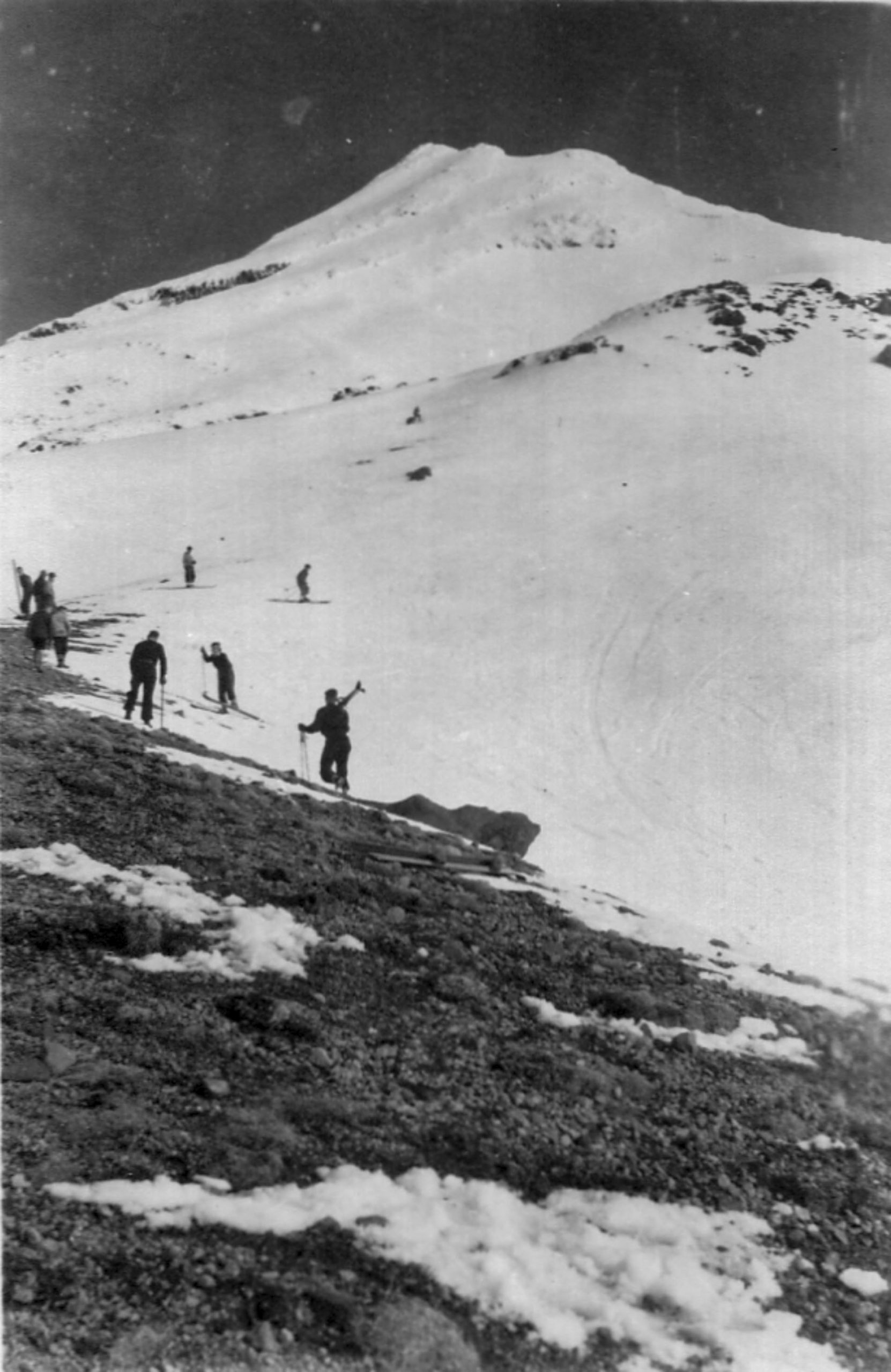
In spite of the Tararuas being the focus of the early club the first trip report in the Journal was a record of a June weekend adventure to North Egmont. A covered furniture removal truck had been hired for transport and the author notes the rush to be lucky and get on the upper deck that had the mattresses, while others had to be content with the straw on the lower deck. It’s also interesting that the truck departed the Railway Station at 8:15 pm Friday and arrived at North Egmont at 6:15 am Saturday! There were 21 on the trip (from a club with about 60 members at that time), and they had the usual indifferent Egmont weather, although 10 people made the summit in dense misty rain.
The next report was a trip to Tapokapoka [sic] with 14 members. Most made the summit in heavy rain but then later in the day they all became stuck on the wrong side of an uncrossable Orongorongo River at Waerenga Hut (TTC) and didn’t make it out until late Monday.
There is then a short article on Photography Hints—very useful camera exposure tips for the time but certainly not applicable to modern mostly automatic electronic cameras.
Following this is a technical article on skis—the different types available and their uses. Useful information if you were using the long hickory ski with strap-in bindings of the time—and until relatively recently most club members did ski at varying levels of ability.
The next trip report is a Northern Crossing in August from the Pipe Bridge (Poads Road) to the Pines. The group was delayed when in a blizzard they made a wrong turn off Peggys Peak and ended camping in deep snow above the bush. Their only recorded complaint was that the cook burnt their cocoa nightcap. They then walked out to the Pines where the farmer gave them some food before they carried on walking to Carterton. They missed the last train and had to wait until Tuesday morning to get back to Wellington.
The next article is titled ‘Notes on the safe use of firearms’. Item 1 is, ‘Don’t ever point a rifle, loaded or unloaded, at anything you do not wish to kill.’ That seemed like sound advice, but it’s worth remembering that carrying a rifle on a weekend club trip (especially a Fit trip) was quite usual. At the Saturday camp the shooter would be sent off while others pitched camp and built a fire and would nearly always come back with the meat for the evening meal.
Then the story of a club trip across Copland Pass, a fairly serious crossing of the Southern Alps from the Hermitage to the West Coast. The members were all impressed by the scenery, both above and below the bush. Strangely they didn’t mention soaking in the Welcome Flats hot pools—one of the usual highlights of the trip.
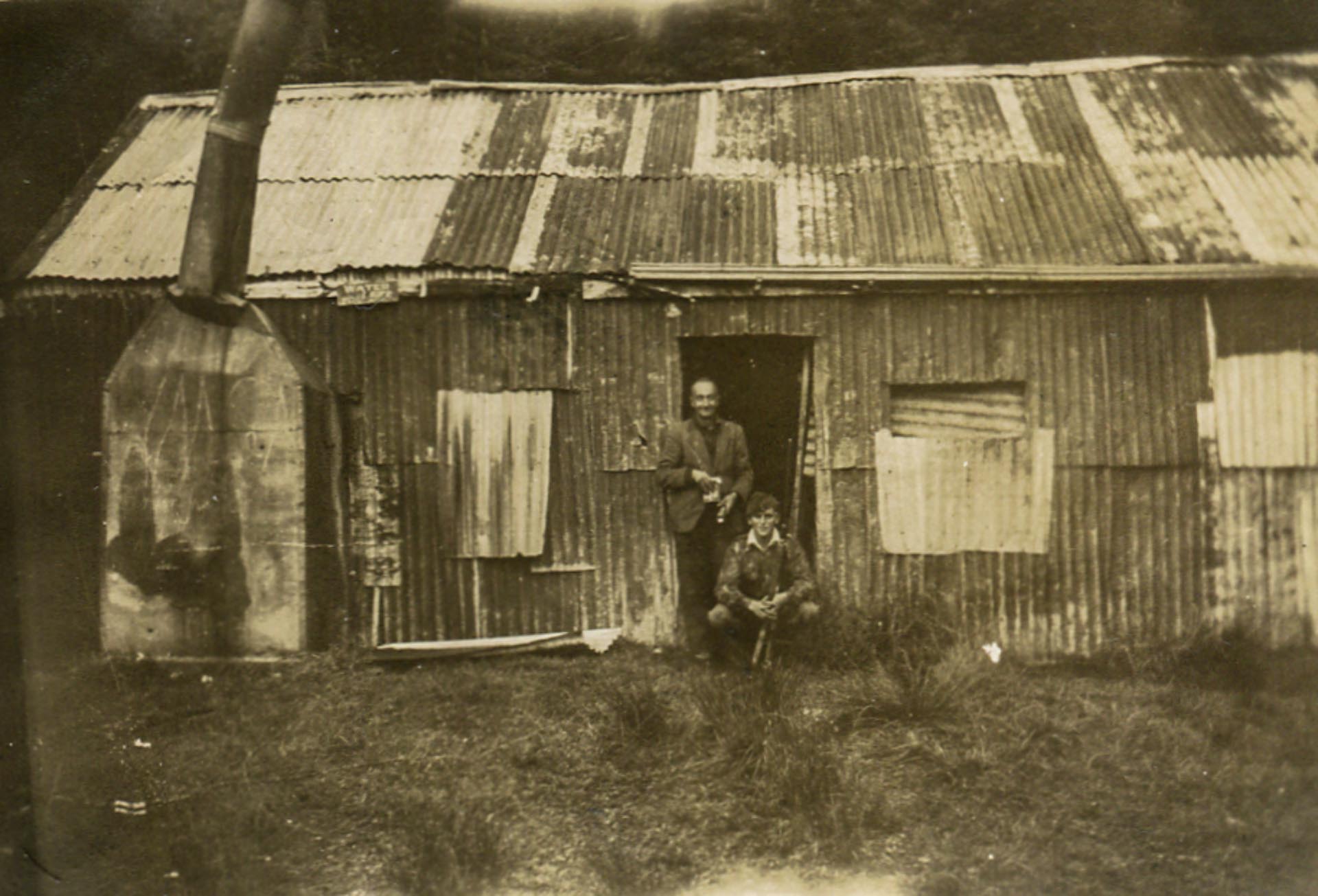
The next section in the Journal sums up the kind of club that existed back in 1947/ 1948. And that was the need for working parties to maintain huts and tracks, and the general acceptance that these were necessary and the enthusiasm that club members showed when needed. On an April weekend there was a working party to clear the track from Field Hut to Kime Hut, that had been allotted to the WTMC as their section of the ‘Combined Clubs Track Working Parties’ commitment. Then on a later weekend the same month there was a working party cutting the new track from the Waiohine Road end to Totara Flats, and at the same time another working party carrying in materials (timber, bags of cement etc.) for the club’s new Smith Creek Hut. For many months there was a working party nearly every fortnight, and always enough people volunteering for the jobs. It was this willingness to offer to help that defined the WTMC, and other clubs, at the time and will not be part of club culture again.
The final report is a trip to the Putangirua Pinnacles with 31 people. It was obviously a very sociable time with groups choosing different activities over the weekend but mostly meeting for the Saturday evening. But what stands out is that two members spent Saturday walking to the pinnacles from the Catchpool via North Saddle, Wharekauhau Stream, and Lake Ferry! It doesn’t say how they crossed the Ruamahunga River at Lake Onoke, but because Lake Ferry settlement is named for the rowboat that ferried people one side to the other, presumably they were able to summon a lift.
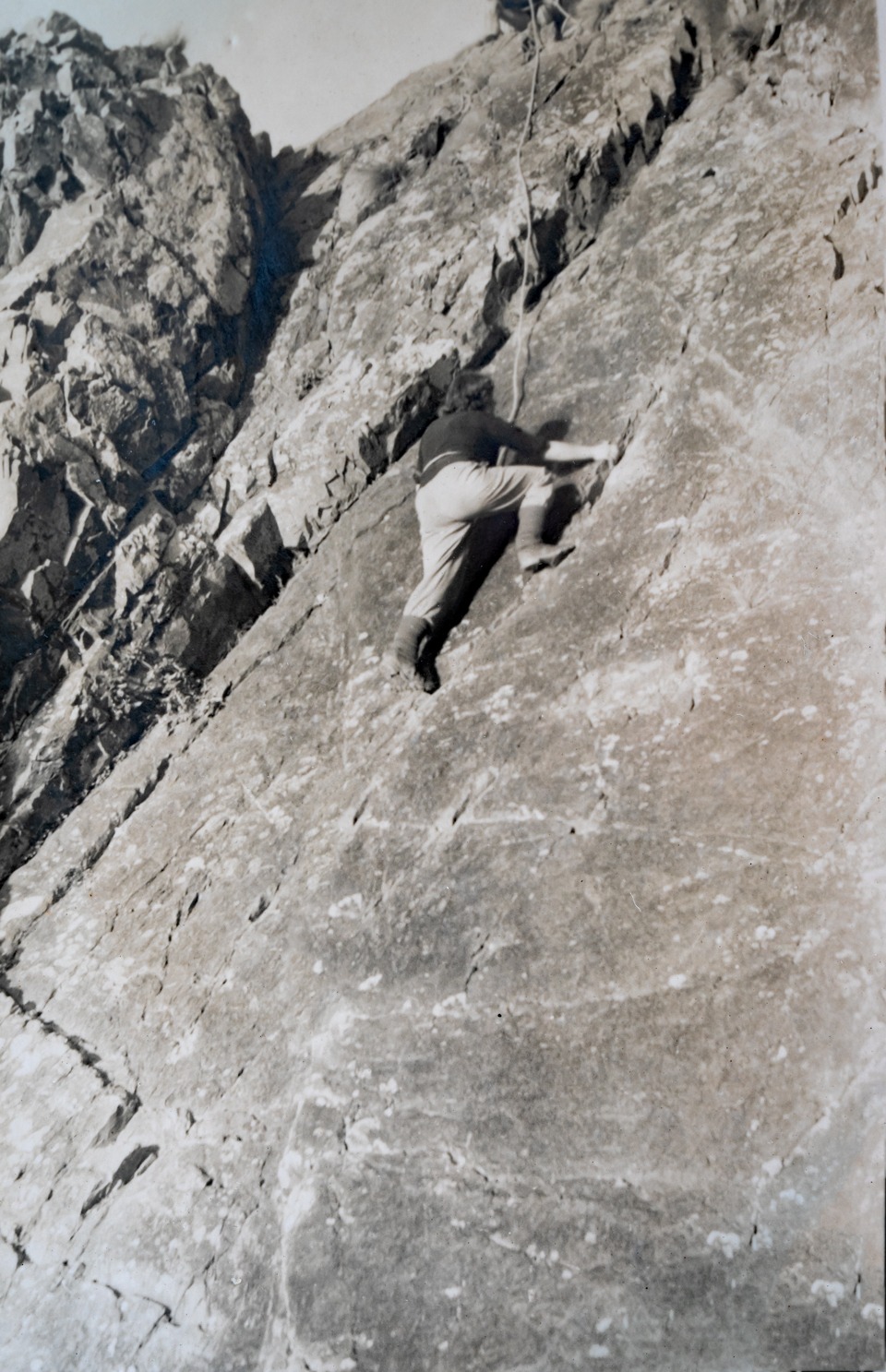
On the last page of the journal is the Trip Schedule for the coming three months. There were usually two trips listed for each weekend and includes: three working parties to the ongoing construction of Smith Creek Hut; an Alpine Instruction weekend at Kime Hut; two Rock Climbing Instruction weekends at Titahi Bay; numerous off-track trips to the Orongorongo area; and one weekend (in mid-winter) with both a Southern Crossing and a Neill Winchcombe Crossing. A varied and stimulating offering of trips for a club only a few months old and with only about 60 members.
So, what to make of the club’s 75 years? The only thing we can likely agree on is that it has changed with the times and it’s membership to be unrecognisably different to anything those early members could possibly have imagined. Whether they would have been happy to see the club that was so much of their lives changed to be as it is now, thankfully we will never know.
For an entertaining account of a 1948 ski trip to Mt Ruapehu go to The fantastical Flying Bed

